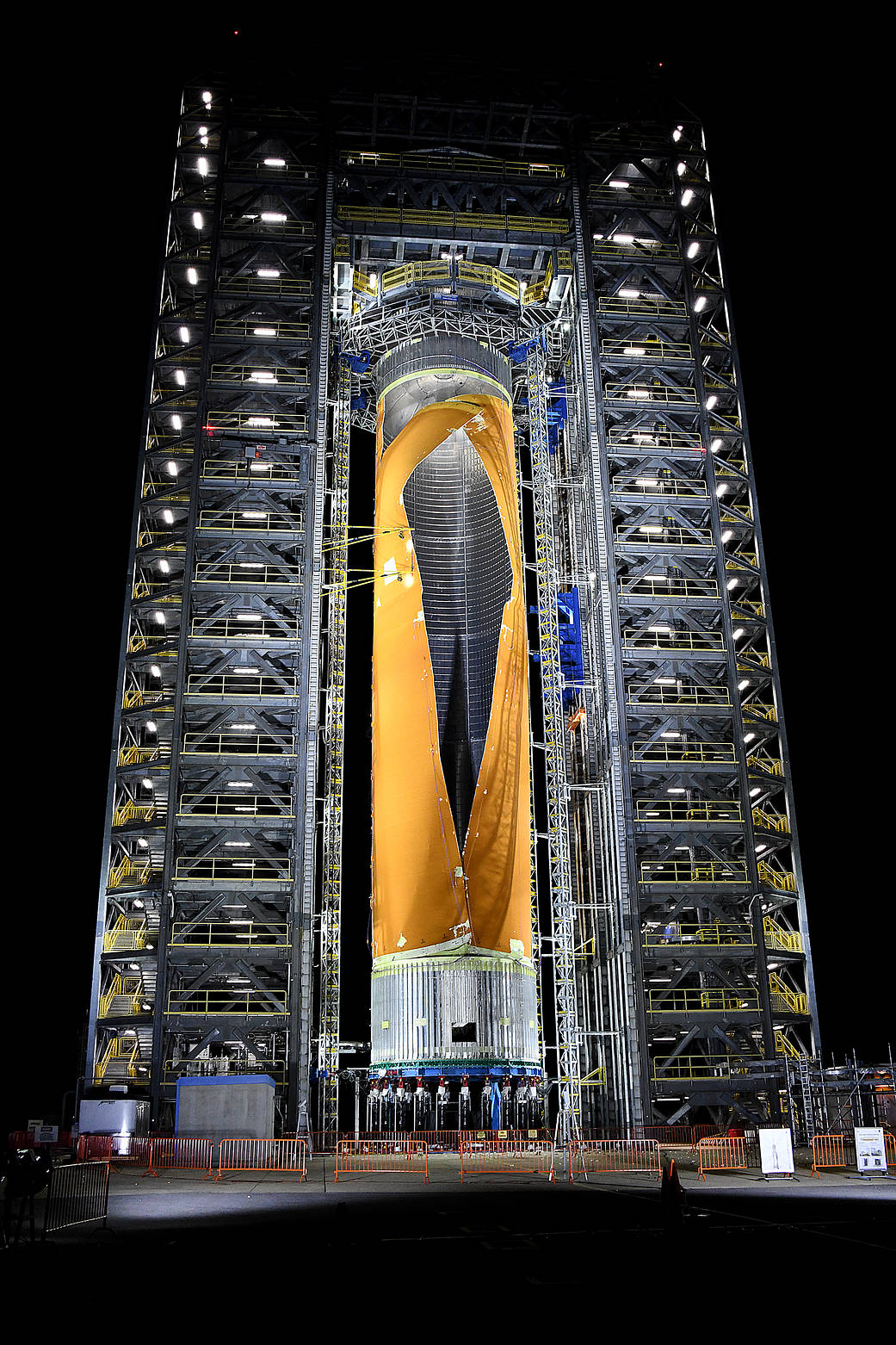For every piece of the Space Launch System (SLS) rocket, engineers predict how much force the piece can withstand based on the design of the part. This is important for every rocket, but it is essential for a rocket designed to carry astronauts safely to deep space. To ensure it will be able to do its job and safely send humans to the Moon and other deep space destinations, engineers use computer modeling to design the rocket’s part to specific factors of safety. They anchor those models with testing to see if the model’s predictions are correct. The first SLS structural tests showed that the liquid hydrogen tank would survive the forces predicted to occur during launch and flight. The Dec. 5 test pushed the tank to its limits to see how much force it would take to cause the tank’s structure to fail. This image shows the resulted buckling of the structure when the tank failed after exposure to more than 260% of expected flight loads over 5 hours. These test results will provide rocket designers with valuable information that could be used to make the SLS tanks more lightweight and allow the rocket to send even more cargo to space. The results also will inform the designs of other government and commercial rockets.
Image credit: NASA/David Olive



























